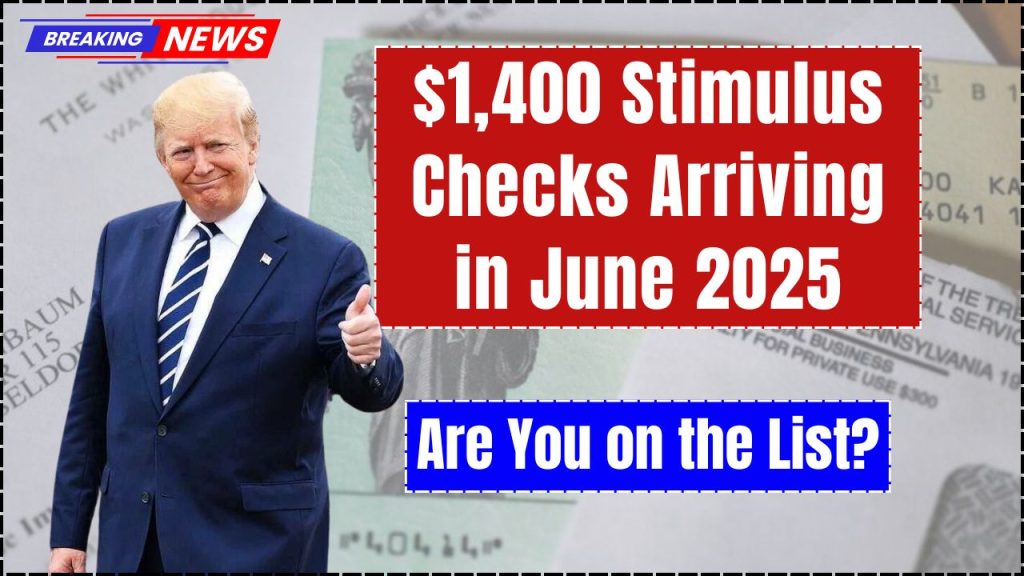
The $1,400 stimulus checks from 2021’s American Rescue Plan Act represented the third and final round of pandemic-era Economic Impact Payments. While most eligible Americans received these payments during the initial distribution, approximately one million people either never received their full payment or failed to claim it entirely. Understanding the timeline, eligibility requirements, and what options remain available is crucial for anyone who may have missed out on this financial relief.
The Third Stimulus Payment Program
The Recovery Rebate Credit is a refundable credit for individuals who did not receive one or more Economic Impact Payments (EIPs), also known as stimulus payments. This credit was designed to ensure that all eligible Americans received the financial support they were entitled to under the American Rescue Plan Act of 2021.
The stimulus payments were intended to provide immediate economic relief during the COVID-19 pandemic, with the third round specifically targeting families and individuals who needed support as the economy recovered from pandemic-related disruptions.
Recent Automatic Payments from the IRS
In December 2024, the IRS took an unprecedented step to help taxpayers who had missed claiming their Recovery Rebate Credit. The IRS announced the special step after reviewing internal data showing many eligible taxpayers who filed a return but did not claim the credit.
No action is needed for eligible taxpayers to receive these payments, which will go out automatically in December and should arrive in most cases by late January 2025. These automatic payments totaled approximately $2.4 billion, reaching around one million taxpayers who had filed 2021 tax returns but left the Recovery Rebate Credit field blank or incorrectly entered $0.
How the Automatic Payment Process Worked
| Payment Detail | Information |
|---|---|
| Payment Amount | Up to $1,400 per eligible individual |
| Total Distribution | $2.4 billion to approximately 1 million taxpayers |
| Delivery Method | Direct deposit or paper check |
| Timeline | December 2024 through January 2025 |
| Notification | Separate IRS letter explaining the payment |
Critical Deadline Information
Important Update: The IRS typically only allows you to file an old return and get a refund within three years, so June 15, 2025, was the last chance to get any outstanding 2021 credit. This deadline has now passed.
For individuals who never filed a 2021 tax return, the opportunity to claim the Recovery Rebate Credit ended on June 15, 2025. After June 15, taxpayers will forfeit the stimulus check money and it will be returned back to the U.S. Treasury.
Eligibility Requirements for the $1,400 Payment
The eligibility for the Recovery Rebate Credit was based on 2021 tax year information and followed specific income thresholds:
Income Thresholds for Full Payment
| Filing Status | Full Payment Threshold | Phase-out Begins | No Payment Above |
|---|---|---|---|
| Single Filers | Up to $75,000 AGI | $75,000 | $80,000 |
| Head of Household | Up to $112,500 AGI | $112,500 | $120,000 |
| Married Filing Jointly | Up to $150,000 AGI | $150,000 | $160,000 |
Additional Eligibility Requirements
To qualify for the Recovery Rebate Credit, taxpayers must have met these criteria:
- U.S. Citizenship or Legal Residency: Must be a U.S. citizen or legal resident
- Valid Social Security Number: Required for the taxpayer and any dependents
- Filing Status: Cannot be claimed as a dependent on another person’s tax return
- 2021 Tax Return: Must have filed a 2021 federal tax return to claim the credit
Who Received Automatic Payments
Qualified taxpayers are those who filed a 2021 tax return, but the data field for the Recovery Rebate Credit was left blank or was filled out as $0 when the taxpayer was eligible for the credit.
The IRS identified these taxpayers through internal data analysis and automatically issued payments without requiring any action from the taxpayers. This proactive approach helped ensure that eligible individuals received their rightful payments without the complexity of filing amended returns.
Impact on Federal Benefits
One important aspect of the Recovery Rebate Credit is its treatment regarding federal benefits. Any Recovery Rebate Credit received does not count as income when determining eligibility for federal benefits such as Supplemental Security Income (SSI), Supplemental Nutrition Assistance Program (SNAP), Temporary Assistance for Needy Families (TANF), and the Special Supplemental Nutrition Program for Women, Infants, and Children (WIC).
This means that receiving the stimulus payment will not affect your eligibility for other government assistance programs.
Protection Against Stimulus Check Scams
With any government payment program, scammers often attempt to take advantage of confusion and misinformation. Here are the key points to remember:
Red Flags to Watch For
- Unsolicited Contact: The IRS will never initiate contact through phone calls, text messages, or emails about stimulus payments
- Requests for Personal Information: Legitimate IRS communications will not ask for Social Security numbers, bank account details, or other sensitive information
- Payment Processing Fees: The IRS never charges fees to process stimulus payments
- Pressure Tactics: Scammers often create false urgency or threaten legal action
How to Verify Information
- Use only the official IRS website at IRS.gov
- Create an IRS Online Account to check your payment status
- Contact the IRS directly using official phone numbers found on their website
- Report suspicious communications to the IRS at [email protected]
What to Do If You Think You Missed a Payment
If you believe you were eligible for the $1,400 stimulus payment but never received it, here are the steps you should have taken before the June15, 2025, deadline:
Checking Your Payment Status
The most reliable way to verify whether you received Economic Impact Payments was through your IRS Online Account. This secure portal allowed taxpayers to:
- View their Economic Impact Payment history
- Check the status of their 2021 Recovery Rebate Credit
- Verify their filing history for 2021
For Those Who Never Filed 2021 Returns
Eligible taxpayers who did not file must file a tax return to claim a Recovery Rebate Credit, even if their income from a job, business or other source was minimal or non-existent. This was true even for individuals who normally wouldn’t be required to file a tax return due to low income.
The Broader Context of Pandemic Relief
The $1,400 stimulus payments were part of a comprehensive response to the economic challenges created by the COVID-19 pandemic. These payments, along with enhanced unemployment benefits, expanded Child Tax Credits, and other relief measures, were designed to provide immediate financial support to American families during an unprecedented economic disruption.
Total Economic Impact Payment Programs
| Round | Legislation | Payment Amount | Distribution Period |
|---|---|---|---|
| First | CARES Act | Up to $1,200 | Spring 2020 |
| Second | CAA | Up to $600 | December 2020/January 2021 |
| Third | American Rescue Plan | Up to $1,400 | March 2021 |
Moving Forward: Tax Compliance and Future Relief
While the opportunity to claim the 2021 Recovery Rebate Credit has passed, this situation highlights the importance of staying current with tax filings and understanding available credits and deductions. Many taxpayers are unaware of tax credits and deductions for which they are eligible or face other barriers keeping them from claiming them.
Key Takeaways for Future Tax Seasons
- File Returns Even with Low Income: Many beneficial credits are available even to those with minimal income
- Review Available Credits: Take time to understand credits like the Earned Income Tax Credit, Child Tax Credit, and others
- Keep Records: Maintain documentation of all government payments and tax-related correspondence
- Use Official Resources: Rely on IRS.gov and certified tax professionals for accurate information
Final Thoughts
The $1,400 stimulus check program represented a significant effort by the federal government to provide economic relief during the pandemic. While the IRS made extraordinary efforts to ensure eligible taxpayers received their payments, including the automatic distribution of $2.4 billion in late 2024 and early 2025, the opportunity for those who never filed 2021 returns has now concluded.
The most important lesson from this experience is the value of staying informed about tax obligations and available benefits, even when income levels might not typically require filing returns. Future relief programs or tax benefits may have similar requirements, making it crucial to maintain awareness of filing deadlines and eligibility criteria.
For taxpayers who missed the deadline, the focus should now shift to ensuring compliance with current tax obligations and staying informed about any future relief programs that may become available.
Frequently Asked Questions
Can I still claim my $1,400 stimulus check in 2025?
No, the deadline to file a 2021 tax return and claim the Recovery Rebate Credit was June 15, 2025, which has passed.
What if I filed my 2021 return but didn’t claim the credit?
If you filed a 2021 return but left the Recovery Rebate Credit blank or entered $0, you may have already received an automatic payment from the IRS in late 2024 or early 2025.
Will the stimulus payment affect my other government benefits?
No, Recovery Rebate Credit payments do not count as income for federal benefit programs like SSI, SNAP, TANF, or WIC.
How can I verify if I received all my stimulus payments?
Create an IRS Online Account at IRS.gov to view your Economic Impact Payment history and verify what payments you received.
For the most current information about tax credits, filing requirements, and IRS programs, visit IRS.gov or consult with a qualified tax professional.

Mangesh garg is a passionate writer known for captivating stories that blend imagination and reality. Inspired by travel, history, and everyday moments, He crafts narratives that resonate deeply with readers.



